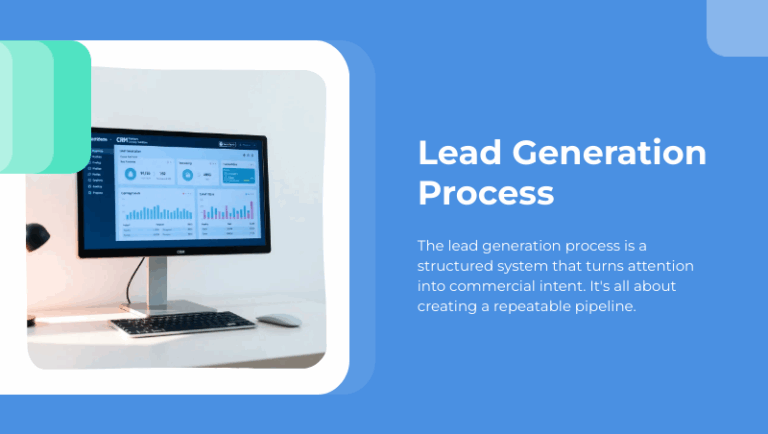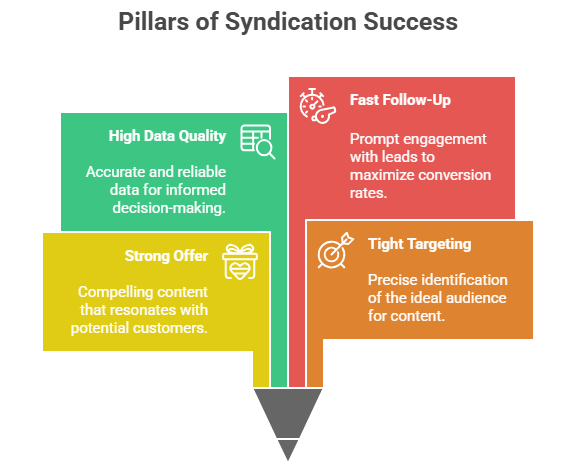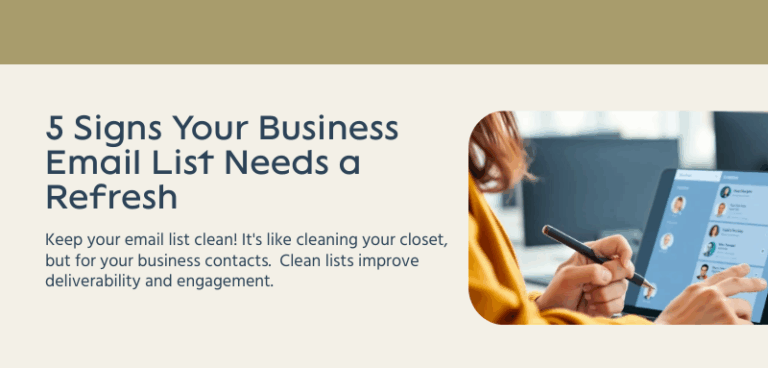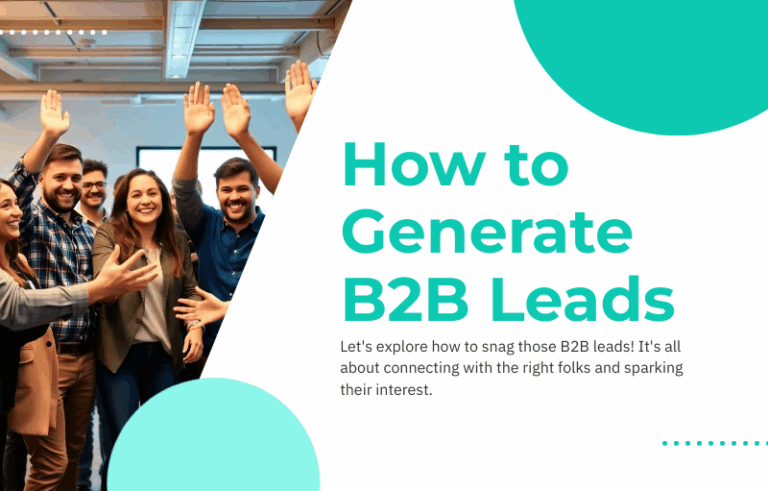Any B2B company needs sales-qualified leads to grow, and in order to sustain revenue growth, there must be a consistent supply of these leads. But keeping a pipeline full of quality leads comes with its own set of difficulties. It’s common knowledge that finding the right decision makers, piqueing their interest, and assisting them in the sales process can be challenging. Nevertheless, you can make sure that your sales funnel is always full with qualified leads by combining a successful variety of B2B sales lead creation techniques.
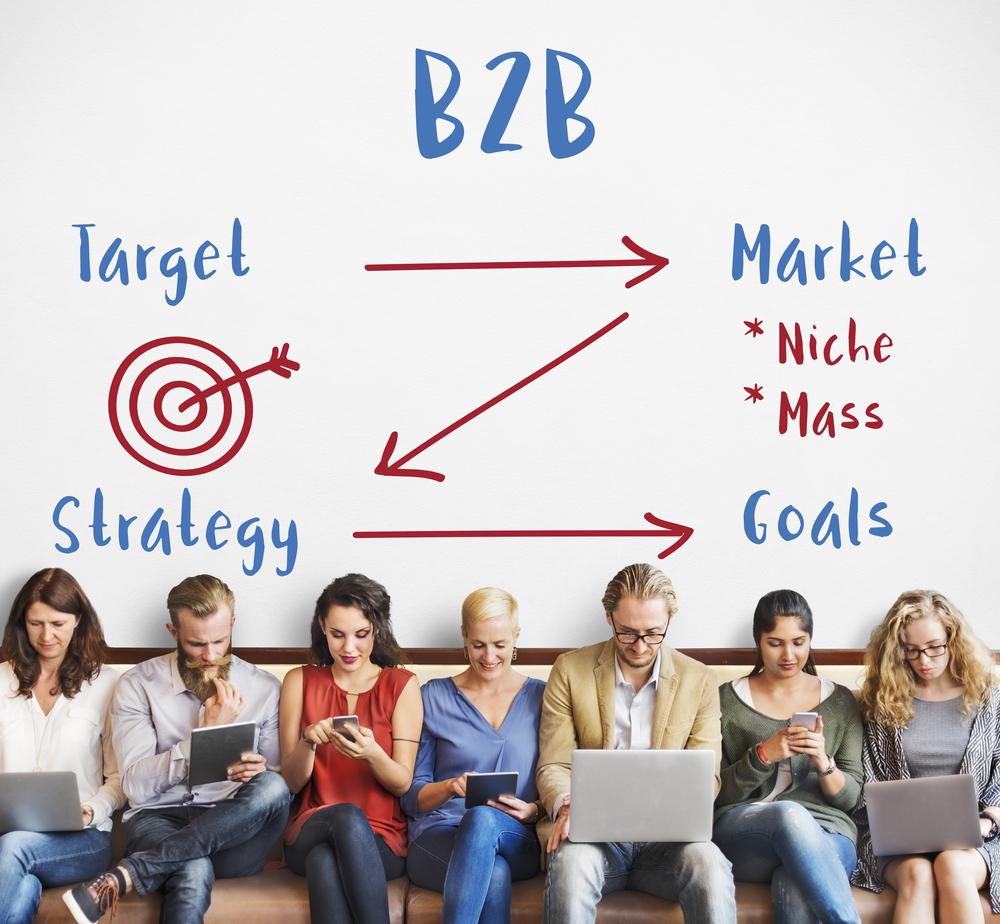
We’ll go over doable tactics in this post to improve lead generation for B2B sales and support company expansion. You’ll get knowledge to improve your outbound prospecting strategy and increase the number of recommendations you receive. As an extra benefit, we’ll also introduce you to five essential tools that will improve the quality of B2B sales-qualified leads that you generate.
What is a B2B Sales Lead?
Sales-qualified leads, also known as B2B sales leads (SQLs), are prospective clients who have undergone a rigorous screening process to meet predetermined criteria, increasing the probability that they will become paying customers.
A SQL needs to:
- Conform to your Ideal Client Profile (ICP).
- Be ready to discuss a specific solution you present.
- Be receptive to different sales strategies.
Following their qualification as an SQL, these leads are prime candidates for highly targeted sales initiatives, like one-on-one meetings, specially designed product demos, or presentations catered to their particular requirements and obstacles.
A podcast, social selling, or cold emailing are a few tactics you can use to draw in qualified B2B sales leads that are prepared for conversion. Later in this piece, we will explore these techniques in more detail.
Before moving on, take into account the following crucial elements for producing superior B2B sales leads:
- Identifying Decision-Makers: To effectively tailor your pitch, identify the important players or influencers in a prospect’s organization.
- Navigating Long Sales Cycles: Prepare for extended interaction by providing leads with relevant information and following up on a frequent basis.
- Showing ROI: Potential customers want proof of the return on their investment. Provide hard facts, case studies, or testimonials that demonstrate the worth and return on investment of your product.
- Ensuring Compatibility and Growth Potential: Your product should be scalable to meet the needs of the prospect and should interact seamlessly with their systems.
- Offering Ongoing Support Following the Sale: Maintaining a high standard of service following the sale helps strengthen business-to-business (B2B) ties, encouraging recurring business and referrals and fostering long-term company success.
The identification and qualification of business-to-business (B2B) prospects poses distinct complexities and obstacles, setting it apart from the B2C market. Using focused and specialized techniques is crucial for producing high-quality B2B sales leads.
A Complete Guide to the Top 10 Strategies for Creating B2B Sales Leads
This section explores the best practices for generating B2B sales leads and offers doable actions to put them into practice in your business.
- Send out cold emails
- Offer no-cost consultations or product demos
- Attend conferences and social gatherings
- Start a Podcast
- Make Use of Cold Calling Strategies
- Make Use of Marketing Based on Accounts
- Support Industry-Related Events
- Adopt Social Selling; and
- Contribute Your Knowledge to Online Forums
- Establish Alliances with Other Businesses
1. ) Making Use of Cold Emails
In B2B, cold emailing is still a very successful lead-generation tactic. Using customized emails, it enables you to get in touch with important prospects who fit your Ideal Customer Profile (ICP).
Tailoring your communications shows potential customers that you comprehend their particular problems and how your products might improve their operations. The following are crucial pointers to improve your cold emailing endeavors in search of top-notch B2B sales leads:
- Understand Your Audience: Accurately identifying and assembling a list of possible prospects who could profit from your product is the cornerstone of a successful cold email campaign. To have a deeper understanding of your target audience, conduct extensive research. LinkedIn Sales Navigator is one of the most useful tools for locating potential customers within certain firms.
- Create Attention-Grabbing Subject Lines: Make your prospects want to open your email by creating subject lines that appeal to their requirements or interests. You could, for example, send a sales director an email with the subject line, “Boost Your Sales by 20% This Quarter.
- Personalize Your Emails: By tailoring your emails to each prospect, you may establish a more meaningful relationship. Include particulars like their name, position, and firm to make your message more interesting and relevant.
- Showcase Your Value Proposition: In the email body, succinctly state the advantages of your good or service. A strong call-to-action (CTA) and a concise presentation of your value proposition should be part of your messaging. Encourage potential customers to take the next action, such as arranging a consultation, downloading an e-book, or requesting a demo, with your call to action (CTA).
- Follow Up Diligently: Don’t be afraid to send follow-up emails if you don’t hear back from people after your initial correspondence. You may greatly increase your response rate and visibility by scheduling your follow-ups every two to three days.
Now that you have these pointers, it’s time to get a cold emailing program and start creating interesting emails for your prospects.
This is an example of a cold email template that you can modify to get your business to generate leads.
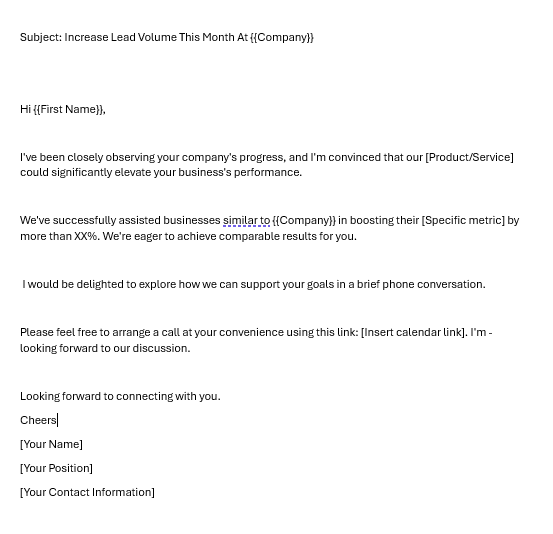
Related: Lead Gen for Saas Companies
2. ) Provide Free Consultations or Product Showcases
Free services are a good method to get attention, particularly in the business-to-business (B2B) market. Offering free consultation calls or product demos is a powerful way to attract B2B prospects.
By using this strategy, you can show prospective clients that you are willing to offer your knowledge freely, which will help you gain their trust and develop a relationship that will increase the possibility that they would do business with you.
Initiating complimentary consultations or product demonstrations is the first step towards effective B2B lead creation.
- Appraise Your Level of Expertise: Start by assessing your level of understanding in relation to your Ideal Customer Profile (ICP). Think about the special value your offering offers to potential customers and how it may be tailored to suit their needs.
- Build a Landing Page: After evaluating your level of experience, draft a page outlining the benefits of your no-obligation consultation. Emphasize the benefits that prospects will experience from giving their time. – Create a form on this page to get leads’ contact information and provide times so they can arrange a consultation.
- Synchronize Marketing with Sales Efforts: Align your outbound and inbound marketing campaigns to drive traffic to your landing page. Use Calls to Action (CTAs) to direct readers to your landing page, for instance, or incorporate direct links in your cold emails to lead prospects there. Potential leads are directed to a single location for efficient interaction and tracking thanks to this integrated strategy.
- Get Ready for the Meetings: Plan ahead to make the consultation experience even better. Think about creating a template or process to quickly resolve concerns from prospects and emphasize your added value.
- Aim for Conversion: Direct prospects to the following stage of the sales funnel as you wrap up your session.
This may be offering them a complimentary sample of your good or service, letting them experience its advantages directly, or making an irresistible customized pricing offer.
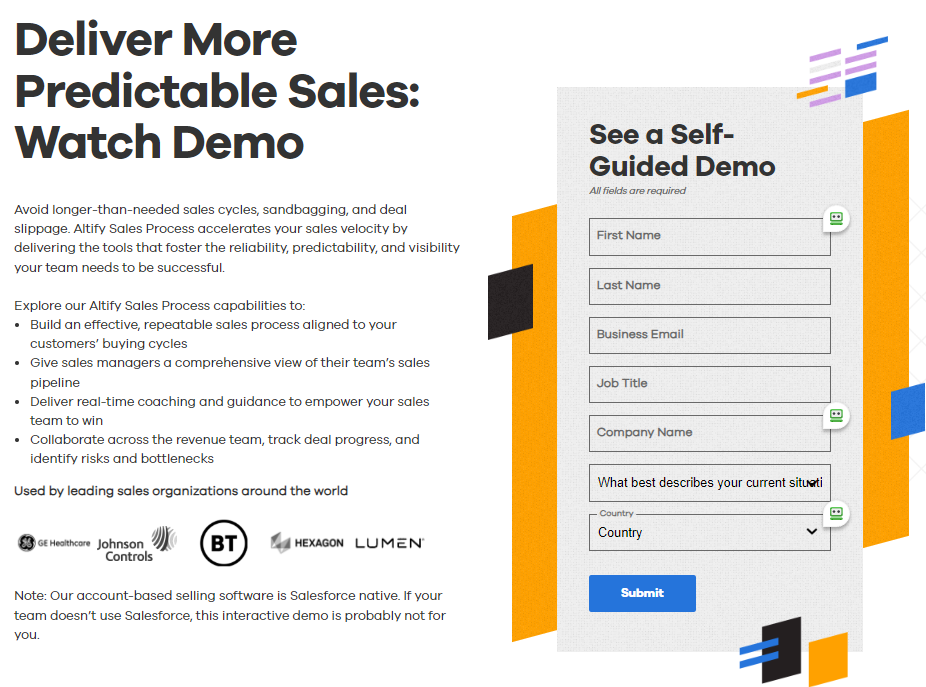
Remember that you still have a valuable lead that may convert at a later time, even if a sale hasn’t closed right away. It is therefore imperative that you follow up with prospects who participated in your free consultation on a regular basis.
3.) Participating in Conferences and Events
Engaging in relevant conferences and events offers an excellent avenue for direct interaction with potential B2B prospects.
Face-to-face meetings are invaluable for fostering relationships and acquiring leads, often unreachable through online channels. Moreover, participating in these industry gatherings positions you as a thought leader, elevating your authority by sharing knowledge and best practices, thus enhancing brand visibility and opening sales avenues.
Utilize these strategies to optimize your lead generation efforts at your next conference:
- Select Suitable Events: Conduct thorough research to pinpoint key conferences that attract decision-makers fitting your ideal customer profiles. Being at the right event is crucial for connecting with the appropriate contacts.
- Define Goals and Objectives: Clearly outline what you aim to accomplish at the conference. Consider whether your focus is on networking to uncover sales leads or purely educational. With likely several goals, prioritize them and devise a plan for each.
- Demonstrate Your Expertise: Prepare compelling presentations to capture the attention of potential leads, showcasing why your solutions stand out. This is your opportunity to demonstrate your industry leadership.
- Engage Actively in Networking: Be proactive in initiating conversations during sessions, at exhibit booths, and social events. Aim to understand attendees’ roles, their businesses, and potential needs, fostering meaningful connections.
- Participate in Social Functions: Attending social gatherings and industry discussions is an effective method to meet decision-makers and potential clients. These settings are ripe for exchanging ideas and contacts, paving the path for future collaborations.
- Ensure Follow-Up: Post-event, make an effort to connect with new contacts via email or LinkedIn, and consider social media posts to extend your engagement. Importantly, integrate promising contacts into your CRM to maintain dialogue.
Though attending conferences demands careful planning, the direct engagement with key prospects justifies the effort, significantly boosting your potential for generating qualified B2B sales leads.

4.) Starting a Podcast
Podcasts are a powerful strategy for creating sales leads because they give potential customers a way to interact with your business. Converting curious listeners into leads and, eventually, consumers is the essence of podcasting.
You become recognized as a thought leader and gain credibility with prospective customers by sharing insights, best practices, and interviews with industry experts.
Take a look at these tactics to use podcasts to generate quality B2B sales leads:
Pinpoint Your Niche: To set your podcast apart, you must decide on a distinct subset of your industry. This focus draws customers who are actually interested in what you have to offer.
Select an Appropriate Platform: It’s important to pick a platform that will work for both your content goals and your target audience. Consider user-friendliness, possibility for distribution, and analytical power when evaluating platforms.
Maintain Consistency in Format and Schedule: Maintaining a consistent format and publishing schedule is essential to keeping readers interested. Maintaining consistency makes sure your audience looks forward to each new episode.
Create Engaging material: Put your attention into producing material that speaks to your niche audience’s interests and offers genuine value. The secret is to organize episodes around timely subjects and keep listeners engaged with interesting bits.
Promote Effectively: Increase the exposure of your podcast by advertising it on social media platforms that members of your target audience visit and by using email marketing to connect with prospective listeners.
Build and Leverage Relationships: It’s vital to establish a solid rapport with your audience. To foster community and loyalty, respond to listener comments, provide exclusive content, and provide interactive experiences.
-Add CTAs and Lead Magnets: Include calls-to-action in your podcast to entice listeners to do actions such as downloading ebooks or signing up for newsletters. This will turn listeners into leads by collecting their contact information.
Evaluate and Adapt: By routinely assessing the performance of your podcast, you can adjust your content approach to better suit listener tastes and boost lead generation initiatives.
Using these strategies in your podcasting endeavor can help you produce a lot of high-quality B2B sales leads. By providing high-quality material on a regular basis, you may build a devoted following and a dependable lead generation channel.

5.) Examining Cold Calling
As a proactive outreach strategy, cold calling allows you to speak with potential customers who have never heard of your company before.
This strategy is picking up the phone to talk about your company’s offerings and how they might benefit potential customers. Its efficacy stems from its ability to establish a personal connection by directly interacting with influential decision-makers and crafting a proposal that speaks to their particular needs and interests.
The following are some efficient cold-calling techniques for generating B2B leads:
- Create Targeted Call Lists: Give top priority to compiling a list of potential customers who fit your Ideal Customer Profile (ICP) in order to concentrate your efforts on leads who genuinely want your goods or services.
- Use LinkedIn for Research: You can customize your calls to be more relevant and interesting by using LinkedIn’s insightful information about your prospects.
- Construct a Value-Based Proposal: The prospect must find your pitch relevant and valuable for it to be successful. To make your pitch interesting and helpful, speak directly to their needs and challenges.
- Ask Insightful Questions: Asking insightful questions will help you understand the prospect’s business, difficulties, and procedures rather than just selling. This will allow you to have meaningful conversations and effectively tailor your pitch.
- Anticipate and Address Objections: Being ready for possible objections helps you move the conversation along smoothly while demonstrating understanding and respect for the prospect’s point of view.
- Continue with Follow-Ups: It’s important to follow up consistently, no matter how the first call ends. Develop a relationship with prospects in order to influence them to become leads.
Never forget that every call is an opportunity to gain a deeper comprehension of the demands of your prospects. Make constant improvements to your strategy to increase the effectiveness of your ensuing calls.
Cold calling can develop into a potent channel for turning prospects into worthwhile B2B sales leads with commitment and tactical execution.

6.) Optimizing Your Strategy with Account-Based Marketing (ABM)
Account-based marketing (ABM) zeroes in on high-value accounts, maximizing the impact of your marketing and sales efforts. – This approach targets select customer segments, transforming them into high-quality B2B sales leads and ultimately, into paying customers. – By focusing on the most revenue-generating accounts, ABM ensures your resources are allocated towards the most profitable opportunities.
ABM allows for a deep understanding of the unique needs and challenges of your target accounts, enabling personalized messaging that resonates more effectively. Utilizing analytics is key in ABM, providing insights to steer decisions, track progress, gauge success, and refine strategies for enhanced outcomes.
The strategic focus on lead quality over quantity makes ABM a powerful method for generating B2B sales leads.
Key Steps to Implementing ABM for B2B Success:
- Identify High-Potential Accounts: Begin by pinpointing accounts with the greatest revenue potential, considering factors like industry, company size, and potential for lasting partnerships.
- Select Optimal Communication Channels: Identify the most effective communication channels to reach your target accounts, such as social media, email, webinars, or industry events, ensuring your messages are delivered through the most impactful mediums.
- Deeply Understand Your Buyers: Create detailed buyer personas for each target account to tailor your approach based on their specific needs and decision-making processes.
- Personalize Your Messaging: Craft messaging that addresses the unique challenges of each decision-maker, using insights to make your communications as relevant as possible.
- Foster Sales and Marketing Collaboration: Break down silos and promote teamwork between sales and marketing to focus on nurturing and converting high-value leads.
- Leverage Data for Insights: Monitor important metrics such as engagement, lead generation rates, and conversion to guide your strategy.
- Remain Agile and Adaptable: Be prepared to adjust and refine your ABM strategy in response to feedback and shifts in market conditions.
By prioritizing lead quality through ABM, B2B businesses can maintain high lead standards and drive growth.
7.) Increasing B2B Sales Leads by Sponsoring Events
One smart way to improve B2B sales lead generation is to sponsor industry-specific events. This puts your brand in front of your target market and at the forefront of your industry. This strategy provides a forum for showcasing your goods or services to interested parties and allows for direct interaction with prospective customers who are invested in your industry.

Meeting important industry players in person through event sponsorship provides the chance for meaningful connections and the chance to showcase your knowledge and thought leadership. Talking to prospective customers at these events gives you quick market intelligence that helps you improve your products and tactics.
How to Get the Most Out of Event Sponsorship to Generate High-Quality B2B Sales Leads:
- Select Appropriate Events: Take into account variables such as the event’s size, reputation, and attendee profile as you choose events that complement your business goals and are attended by your target market.
- Create Remarkable Displays and Booths: Make your presence at the event memorable by designing a booth that draws attendees in and providing interactive presentations or demonstrations that highlight the special features of your goods or services.
- Promote Your Attendance: Make use of your marketing channels to make announcements about your attendance at the event. Use strategies like website updates, email blasts, and social media posts.
- Network: Make networking a priority at the event by actively interacting with guests, exchanging contact details, and cultivating relationships that may result in future business dealings or joint ventures.
- Start Following-Up After Events: The procedure of following up is essential. Relate to people you met at the event in a customized way by mentioning your conversations to strengthen the bond.
- Evaluate Your Sponsorship Outcomes: Following the event, evaluate your sponsorship’s effectiveness by looking over metrics like conversion rates, lead generation volume, and lead quality to determine your return on investment.
You may position your company as an industry leader, build important contacts, and increase brand awareness by strategically sponsoring events that are pertinent to your sector. This will eventually result in the acquisition of top-notch B2B sales leads, which are essential for business growth.
8.) Using Social Media to Generate B2B Leads
If you’re not into traditional networking, you might want to look at social selling, a digital alternative. When done well, social selling uses social media’s wide audience to digitally connect with prospects, creating relationships, trust, and B2B sales leads.
It distinguishes itself as a lead generation strategy by facilitating more casual and intimate encounters with prospective customers, which frequently result in more meaningful and in-depth exchanges than those made possible by traditional sales techniques. Additionally, social media platforms provide instantaneous interaction by enabling prompt replies to questions, active participation in conversations, and the gathering of timely feedback—all of which are crucial for comprehending the requirements of your audience.

Steps to Use Social Selling to Improve B2B Sales Leads:
Determine Which Platforms Are Most Appropriate: Select social media channels that best represent the activity of your target market. Platforms like LinkedIn, which a large percentage of B2B marketers rank as their top social network, are frequently crucial in B2B scenarios.
- Share Useful and Relevant Content: Post engaging content, such as industry insights, practical advice, or updates about your offerings, to add value rather than merely making a sale.
- Maintain Active Engagement with Followers: To foster relationships and trust, actively engage your audience by responding to inquiries, leaving comments on posts, and participating in pertinent conversations in addition to regularly publishing content.
- Utilize solutions for Enhanced Engagement: To maintain a regular presence and track your progress, think about utilizing social media management solutions for posting schedules, engagement analysis, and interaction management.
- Personalize Your Communication: To build a personal connection, customize your outreach to each prospective lead. By identifying and connecting with qualified prospects, tools such as LinkedIn Sales Navigator enable tailored engagement based on their requirements and areas of interest.
- Repeatedly Assess and Improve Your Method: Because social selling is a dynamic process, evaluate the success of your plan on a frequent basis and be ready to make adjustments in response to comments, trends, and changes in the social media environment.
Strategic and long-term, social selling can produce a steady stream of quality B2B sales leads. Through genuine interaction and valuable content creation on social media, you open up chances for deep connections that may develop into fruitful commercial partnerships.
9.) Using Forums to Display Your Knowledge
Presenting your skills in online forums allows you to share your knowledge from any location, including your home or office, and provides a virtual equivalent of attending in-person conferences and events. As with conferences, participating in relevant forums is a good way to showcase your knowledge and generate business-to-business (B2B) leads.
Participating regularly in industry-specific forums, LinkedIn groups, Quora debates, or Slack communities can help you establish yourself as an authority in your field and draw in new customers for your company. Regular attendance in these forums also helps you stay up to date on current market trends and obstacles that your prospects are facing, giving you vital information to improve your products and tactics.

How to Effectively Use Forums for Sales Lead Generation:
- Find Relevant Forums: Start by figuring out which forums are most frequented by members of your target demographic. Seek out forums, professional networks, or more general sites like Reddit and Quora that have sections dedicated to your sector.
- Create an Appealing Profile: Make sure your forum profile expresses your corporate affiliation and area of expertise in a clear and concise manner. An attractive profile can make a big impact on others and encourage participation from other forum users.
- Engage With Value: Participate in conversations by providing incisive and practical guidance without coming across as salesy. Make an effort to demonstrate your knowledge and add something significant to the discussion.
- Take part in Q&A: Actively participate by posing thoughtprovoking queries and offering thorough responses. This shows that you’re not just interested in promoting yourself, but also in being an important member of the community.
- Share Useful Content: Contribute to the conversation by sharing pertinent whitepapers, case studies, or articles. Make sure the content you share advances the discussion and is truly informative.
- Build Relationships: Use private chat to strengthen bonds with other forum users. Furthermore, establish connections with them on social media sites like LinkedIn to broaden your professional network.
- Monitor Communications and Adherence: To make sure no opportunity is lost, keep an eye on your interactions in these forums and follow up on any leads or contacts you may have made.
Using forums to actively engage potential clients in their chosen online locations lets you offer your expertise. This proactive strategy is crucial for converting interactions into worthwhile B2B sales leads because it not only increases your credibility and trust but also promotes your reputation as an industry leader.
10.) Working Together with Other Businesses to Generate Leads
Take into consideration developing alliances with other companies to effectively produce top-notch B2B sales leads. By using this strategy, you can benefit from each other’s reach and strengths. Working together with companies that are complementary to yours gives you access to their clientele, greatly increasing the amount of people who see your brand.

These collaborations are mutually beneficial, combining resources to open up fresh avenues for lead creation.
How to Use Business Alliances to Generate Leads:
- Find Appropriate Partners: Search for companies whose goods or services complement yours in a way that will benefit customers by working together to create added value. Seek out partners with complementary skills or fields of expertise.
- Set Defined Goals: Clearly define the partnership’s goals, with an emphasis on lead generation results and success metrics
- Ensure Mutual Benefits: Create a collaboration in which both sides stand to gain significantly, guaranteeing a healthy and productive working relationship.
- Craft Joint Marketing Efforts: To increase your reach and impact, collaborate on marketing initiatives like coauthoring material, organizing joint webinars, etc.
- Tap Into Each Other’s Networks: Expand your prospective lead pool by utilizing each other’s networks for fresh introductions and recommendations.
- Plan Frequent Updates: To track the partnership’s development, assess the effectiveness of shared strategies, and pinpoint areas for improvement, regular meetings are essential.
- Adapt and Evolve the Partnership: To ensure continued benefits to both parties, remain adaptable and willing to modify the partnership plan in response to changing market conditions and business demands.
Business collaborations can be a useful tactic for boosting market presence, driving growth, and producing quality B2B sales leads when they are properly thought out and carried out.
